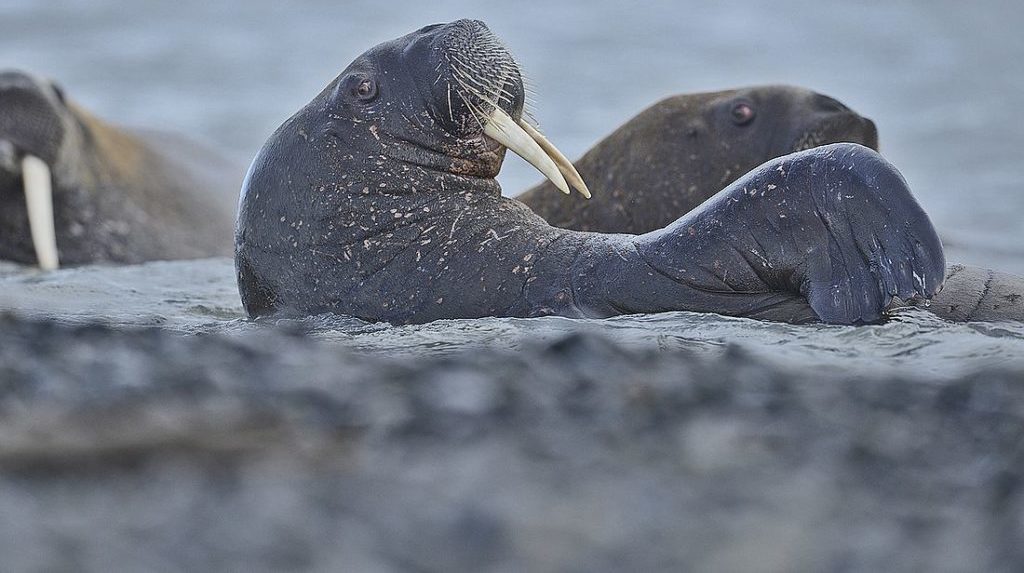#ARCTIC. #SIBERIA. THIS IS TAIMYR. This year, scientists, for the first time in 20 years, noted a cooling snap in the Pacific Ocean, unusual against the background of global warming. It allowed polar bears and walruses to return to their usual way of life on the ice and not go ashore.
Now the animals have managed to come back to the ice, Anatoly Kochnev, a researcher at the Beringia National Park, a specialist in marine mammals, and a candidate of biological sciences, told RIA Novosti. Scientists made this conclusion by studying the behavior of walruses, which, due to temperature changes, had to look for places on the shore, which is unusual for them.
“They are adapted for this, they need ice. Previously, there were no walruses in those places (on the shore), bears rarely entered, because they all lived happily on the ice. They went ashore only in the absence of ice – they needed somewhere to rest. On the shore, walruses choose capes that are sheltered from the wind. And when there is ice, they drift on it, they do not need to waste energy on moving: they dive, eat from the bottom, emerge onto the ice floe – and sleep”, the researcher explained.
Anatoly Kochnev noted that for the last 20 years, when the ice was rising late, walruses had to swim hundreds of kilometers from coastal rookeries to feed themselves. There are few places where the density of molluscs and worms is high. And to get there, they need to spend energy.
“Despite the intense nutrition, walruses lost weight, because they spent more energy than they received. And now they are on the ice, everything is fine with them. Bears also go to the ice. The problem for them is that when there is no ice, they cannot hunt seals. They love them more than walruses – they are tastier, fatter, easier to get because they do not have tusks”, the agency’s interlocutor said.
He also noted that this year the ice carried polar bears eastward more than usual – to places where they were rarely seen before.
The scientist believes that the situation with a cold snap this year on the coast of Chukotka is accidental, and the general warming trend will return.
“If it doesn’t come back, it will be great. Previously, we worried about bears and walruses, for which ice reduction is a burden on the population and a chance to disappear. And if there is a steady trend towards cooling, the area of sea ice will begin to grow again and there will be no threat to animals. Although it will take five to ten years to understand that this trend towards cooling is stable. In this case, it will be necessary to rearrange the emphasis in research and study how the animals were influenced by the years of warming, whether they continue to use the acquired habits”, says Kochnev.
Then, according to the scientist, research methods will change, since in the ice the animals will be less accessible for observation. It will be necessary to use remote tracking, to attract icebreaker ships.
Recall that the polar bear is the largest land predator on the planet. It is listed in the Red Book of Russia and the International Union for Conservation of Nature. Its numbers are steadily declining. Among the main threats are poaching, a decrease in the area of sea ice due to climate change, and pollution of the Arctic natural environment. Polar bear hunting has been banned since 1957.
Earlier we told about why polar bears go out to people.
Follow us on Telegram, Instagram , Facebook and Twitter.
Text: Ekaterina Maksimova, Photo: Alexander Zheleznyak and open sources






